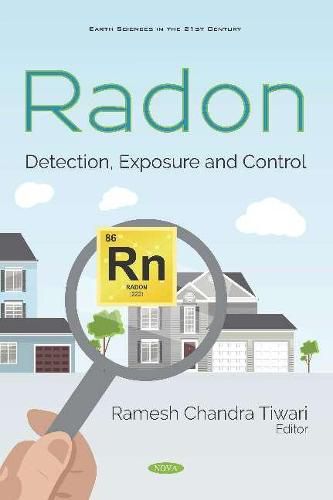Readings Newsletter
Become a Readings Member to make your shopping experience even easier.
Sign in or sign up for free!
You’re not far away from qualifying for FREE standard shipping within Australia
You’ve qualified for FREE standard shipping within Australia
The cart is loading…






In the recent past, studies on radon and their progenies have drawn a lot of attention from the scientific community and researchers, due to their crucial role as a possible cause of cancer, monitoring radiation levels of nuclear installations and as a potential precursor parameter to seismic events. This book titled Radon: Detection, Exposure and Control has 19 chapters comprising of research contributions from across the globe namely; Brazil, Spain, Norway, Ireland, Russia, Taiwan (PRC), Iran, Egypt, Turkey, Saudi Arabia and several regions of India including the seismic zone-V, the second highest seismic zone in the world. This book is very useful to scholars pursuing post-graduate studies and research covering broad areas of applied sciences namely; geophysics, Earth science, geoscience, geochemistry and civil & geotechnical engineering. This book provides a mixed flavour of the recent trends in several types of research works related to detection, exposure and control of Radon (Rn222, Rn220) in a concise and interesting manner. This book contains several chapters dedicated to the radon measurement based radioactivity studies in rocks, over kimberlite pipes, inside soil and in open environments. The book also describes indoor radon gas concentration studies in schools and other working places including the assessment of health risk associated with it including radon exposure, its measurement and protection. In addition to the influence of regional and geophysical characteristics on the volumetric activity of radon, this book also contains the radon-based biometric characterization of person identification. Review articles on a detailed study of fault traces in Taiwan using soil gas geochemistry and the role of radon as precursor to earthquake have also been discussed including psychological perspective of radon risk and remediation. I feel confident that this book shall be extremely useful to the research community of science and engineering streams at large and do hope that they will find it extremely helpful to understand the mechanism and to conceive research problems with potential applications.
$9.00 standard shipping within Australia
FREE standard shipping within Australia for orders over $100.00
Express & International shipping calculated at checkout
In the recent past, studies on radon and their progenies have drawn a lot of attention from the scientific community and researchers, due to their crucial role as a possible cause of cancer, monitoring radiation levels of nuclear installations and as a potential precursor parameter to seismic events. This book titled Radon: Detection, Exposure and Control has 19 chapters comprising of research contributions from across the globe namely; Brazil, Spain, Norway, Ireland, Russia, Taiwan (PRC), Iran, Egypt, Turkey, Saudi Arabia and several regions of India including the seismic zone-V, the second highest seismic zone in the world. This book is very useful to scholars pursuing post-graduate studies and research covering broad areas of applied sciences namely; geophysics, Earth science, geoscience, geochemistry and civil & geotechnical engineering. This book provides a mixed flavour of the recent trends in several types of research works related to detection, exposure and control of Radon (Rn222, Rn220) in a concise and interesting manner. This book contains several chapters dedicated to the radon measurement based radioactivity studies in rocks, over kimberlite pipes, inside soil and in open environments. The book also describes indoor radon gas concentration studies in schools and other working places including the assessment of health risk associated with it including radon exposure, its measurement and protection. In addition to the influence of regional and geophysical characteristics on the volumetric activity of radon, this book also contains the radon-based biometric characterization of person identification. Review articles on a detailed study of fault traces in Taiwan using soil gas geochemistry and the role of radon as precursor to earthquake have also been discussed including psychological perspective of radon risk and remediation. I feel confident that this book shall be extremely useful to the research community of science and engineering streams at large and do hope that they will find it extremely helpful to understand the mechanism and to conceive research problems with potential applications.